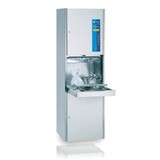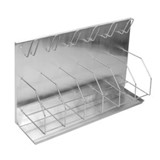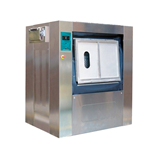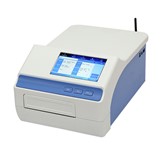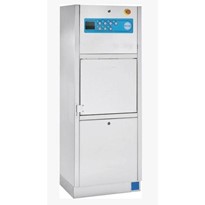Making a choice can be tricky. On face value, a macerator seems a perfect solution. It processes single use items, the machine is relatively in-expensive to purchase and easy to use; just throw the item in and press the cycle button. The rise of the macerator has been extenuated by the fact that traditionally the cleaning efficacy of bedpan flusher sanitisers were not very efficient. However, when one looks closely at the total infection control picture the limitations of a macerator system become evident. Not just in cleaning efficacy but also in general use, cost and environmental impact.
Unlike a washer/disinfector, a macerator can only process specific single use items. Bedpans, kidney dishes, small bowls and perhaps a few other items. But how about the infection control procedures relating to mop heads and buckets? In particular, the Deko-190 can process a variety of infected items that are either not single use or must be before they can be safely processed. For example used instruments in emergency ward need to be sent back to CSSD for processing. Cleaning and disinfecting in a Deko 190 makes the items safe for transport and processing.
The danger of having a “dump your waste” system is that all waste may get dumped, including incontinence pads and other items that are a no go in a sewer system.
The ecological load on a sewer system with a macerator is extreme. Assuming a bedpan weighs 150 grams, a ward using 20 per day adds 1095kg of additional waste to an already overloaded sewer system. That’s a ton of unneeded waste per year.
Assuming the cost for a bedpan is $0.75 then the cost per year for the single ward would be $5,475! Not allowing for the additional cost of storage and transport within the healthcare facility.
There are two human waste disposal methods healthcare facilities can use:
- Single-Use System: These utilise pulp products for human waste collection and then macerators for disposing of these pulp items, as well as the waste.
- Reusable System: This uses stainless-steel or plastic containers for collection and a bedpan washer for cleaning the item prior to being reused.
Differences Between Bedpan Washer and Macerator
Bedpan washers empty and disinfect reusable utensils. They can be used in hospitals, clinics, prisons, aged care facilities, and other infection control facilities. The best of these washer disinfectors, like the Deko 190, will empty, wash with detergent, rinse and then sanitise with steam at plus 90°C. You can be sure that all harmful microbes on the bedpan will be reduced to safe levels.
Pulp macerators process single-use recyclable pulp utensils, they do not recycle. This is the primary difference between the two.
A single-use utensil and its content are disposed of using a pulp macerator. The machine slices the bedpan and its content into fine slurry. This then is flushed through the pipes into the regular drainage system. Although it greatly increases the load on the sewer system, as long as you use pulp machines it will work. The danger in that incontinence pads, nappies and other similar products go into the macerator causing serious blockages.
Since pulp macerators go through a process of disposal, many argue that it can reduce risk. One utensil when placed into the clinician’s chambers won’t have to handle anything again. Hence, the argument of lowered risk.
The second main difference is the cycles. The bedpan washer cycle is much longer than the maceration cycle. Nevertheless, it is only longer by a few minutes.
Healthcare budgets are usually limited. So, the cost is likely to be your top priority. A single-use system might be less expensive to install and run but you have to consider the continued cost of disposables. This is something that you don’t have to worry about when you use reusable items like bedpan washers. Also the additional trade waste fees can be exorbitant.
Now, let’s take a look at the pros and cons of each.
Bedpan Washers
To ensure patient comfort and efficiency, many medical institutions use reusable bedpans. It ascertains you are on top of infection control.
Pros
- It is environmentally friendly.
- It can handle high-volume utensils when it comes to disinfecting. Hence, it is suitable for all busy wards.
- The bedpan washer is a one-off cost in just the machine, with limited consumables to spend on afterward. Cost of ownership is far less.
- It is available in various designs. They come as a wall-mounted, built-in unit, and fitted under worktops.
- It can handle many other contaminated items such as toilet brushes, buckets and mops.
Cons
- It has a higher initial purchase price.
- The cycle times can be longer than macerators.
Macerators
Pros
- Easy to use, just dump and flush.
- It uses less energy. Since it doesn’t require water to be heated, it is cheaper to run.
Cons
- Expensive cost of ownership. For a 15 ward facility that is a spend of over $180,000 per year.
- Does not disinfect – needs chemicals to disinfect chamber.
- Danger of disposing incompatible products (nappies etc).
- Many products, like bedpans, require additional plastic supports which in turn need to be cleaned and disinfected.
Final Words
So, before you choose one, you have to consider if your facility is going to prefer single or reusable use. Also, you need to consider what the patients would prefer and what it will cost in the long-run.
However, if you are looking to save money and be environmentally friendly, a washer-disinfector is just what you are looking for. A bedpan washer helps you save more money in the long-run. It provides a high-heat, safe, cleaning solution with the option of hands-free technology. Using it allows hospitals and care facilities to forecast running costs, effectively. The system is safer for patients, as well as healthcare professionals. In a similar ward of 25 beds a disposable Macerator can cost over $22,000 per annum whereas a Washer disinfector costs less than $10,000 per annum.






